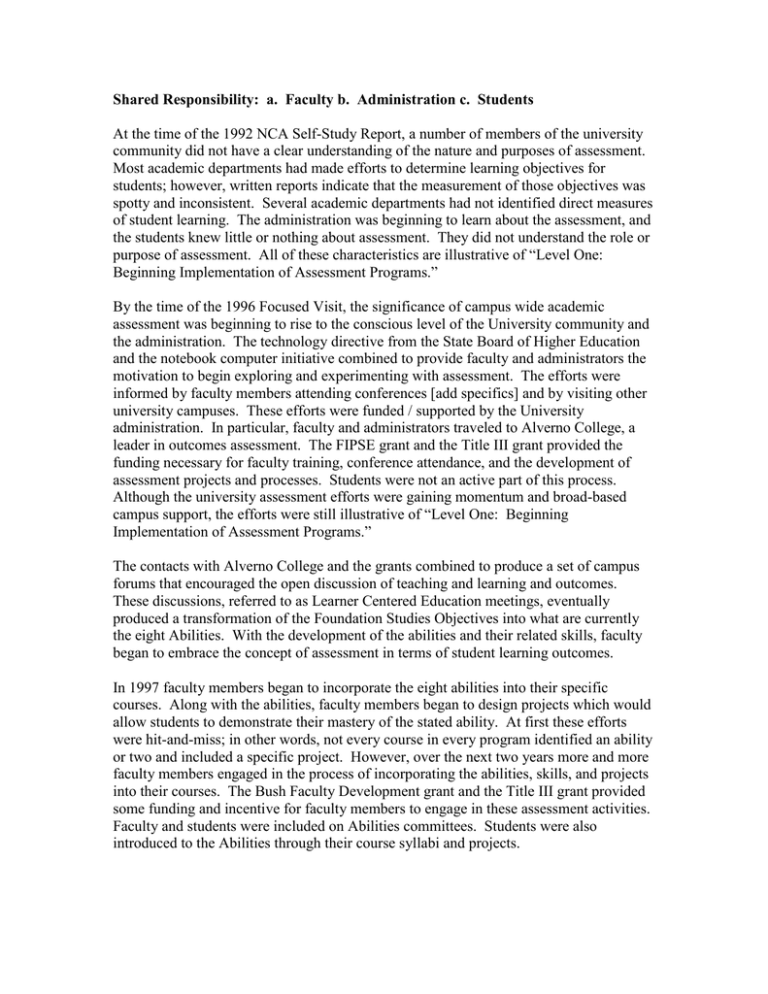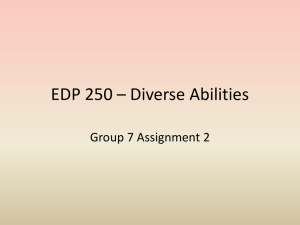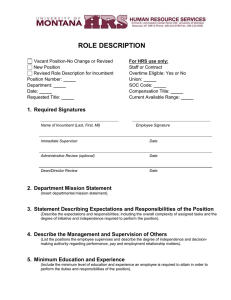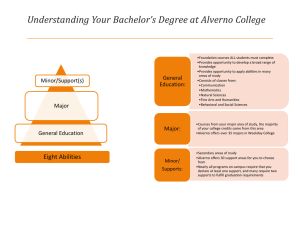Levels Shared Responsibility.doc
advertisement

Shared Responsibility: a. Faculty b. Administration c. Students At the time of the 1992 NCA Self-Study Report, a number of members of the university community did not have a clear understanding of the nature and purposes of assessment. Most academic departments had made efforts to determine learning objectives for students; however, written reports indicate that the measurement of those objectives was spotty and inconsistent. Several academic departments had not identified direct measures of student learning. The administration was beginning to learn about the assessment, and the students knew little or nothing about assessment. They did not understand the role or purpose of assessment. All of these characteristics are illustrative of “Level One: Beginning Implementation of Assessment Programs.” By the time of the 1996 Focused Visit, the significance of campus wide academic assessment was beginning to rise to the conscious level of the University community and the administration. The technology directive from the State Board of Higher Education and the notebook computer initiative combined to provide faculty and administrators the motivation to begin exploring and experimenting with assessment. The efforts were informed by faculty members attending conferences [add specifics] and by visiting other university campuses. These efforts were funded / supported by the University administration. In particular, faculty and administrators traveled to Alverno College, a leader in outcomes assessment. The FIPSE grant and the Title III grant provided the funding necessary for faculty training, conference attendance, and the development of assessment projects and processes. Students were not an active part of this process. Although the university assessment efforts were gaining momentum and broad-based campus support, the efforts were still illustrative of “Level One: Beginning Implementation of Assessment Programs.” The contacts with Alverno College and the grants combined to produce a set of campus forums that encouraged the open discussion of teaching and learning and outcomes. These discussions, referred to as Learner Centered Education meetings, eventually produced a transformation of the Foundation Studies Objectives into what are currently the eight Abilities. With the development of the abilities and their related skills, faculty began to embrace the concept of assessment in terms of student learning outcomes. In 1997 faculty members began to incorporate the eight abilities into their specific courses. Along with the abilities, faculty members began to design projects which would allow students to demonstrate their mastery of the stated ability. At first these efforts were hit-and-miss; in other words, not every course in every program identified an ability or two and included a specific project. However, over the next two years more and more faculty members engaged in the process of incorporating the abilities, skills, and projects into their courses. The Bush Faculty Development grant and the Title III grant provided some funding and incentive for faculty members to engage in these assessment activities. Faculty and students were included on Abilities committees. Students were also introduced to the Abilities through their course syllabi and projects. In addition, each division identified several of the eight abilities around which their efforts would focus. Then within the divisions, departments / programs identified specific ways by which their students could demonstrate the attainment of those specific abilities. By 1999 the Shared Responsibility of the faculty, administration and students for assessment at VCSU exhibited those characteristics associated with “Level Two: Making Progress in Implementing Assessment Programs.” [see bulletin for evidence also see syllabi]





